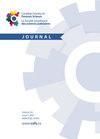The use of fungi in forensic science, a brief overview
IF 0.5
Q4 MEDICINE, LEGAL
Canadian Society of Forensic Science Journal
Pub Date : 2021-01-02
DOI:10.1080/00085030.2020.1869390
引用次数: 2
Abstract
Abstract Fungi are increasingly being used in criminal investigations as a source of data for crime scene and can be proposed as a forensic tool. There are very few forensic investigators trained in this discipline, which justifies the small amount of published data and most justice professionals are not aware of the contribution of fungi to these investigations. A wide variety of techniques derived from biology are used by forensic investigators to study the changes in the corpse and in the ground where the corpse decomposition occurs in order to solve a crime or find clandestine burials. We review the data available on the use of mycological evidence in criminal cases and as proofs before the justice. The first uses of fungi as evidence were restricted to cases associated with poisonous or psychotropic species. Currently, the objective of forensic mycology is to date the post-mortem and post-burial intervals using information from the fungal community found on the corpse surface or in the environment associated with a clandestine burial. The use of fungi as a forensic tool in different parts of the world has aroused the interest of forensic investigators, such as the members of the different Law Enforcements who deal with solving criminal cases.真菌在法医学中的应用,简要概述
摘要真菌越来越多地被用于刑事调查,作为犯罪现场的数据来源,并可被提议作为一种法医工具。很少有受过这一学科培训的法医调查员,这证明了公布的少量数据是合理的,大多数司法专业人员都不知道真菌对这些调查的贡献。法医调查人员使用来自生物学的各种技术来研究尸体和尸体分解发生地的变化,以破案或寻找秘密埋葬处。我们审查了在刑事案件中使用真菌学证据以及作为司法证据的可用数据。真菌作为证据的首次使用仅限于与有毒或精神物种有关的案件。目前,法医真菌学的目标是利用尸体表面或与秘密埋葬有关的环境中发现的真菌群落的信息,确定死后和埋葬后的间隔时间。真菌作为法医工具在世界各地的使用引起了法医调查人员的兴趣,例如负责破获刑事案件的不同执法部门的成员。
本文章由计算机程序翻译,如有差异,请以英文原文为准。
求助全文
约1分钟内获得全文
求助全文

 求助内容:
求助内容: 应助结果提醒方式:
应助结果提醒方式:


